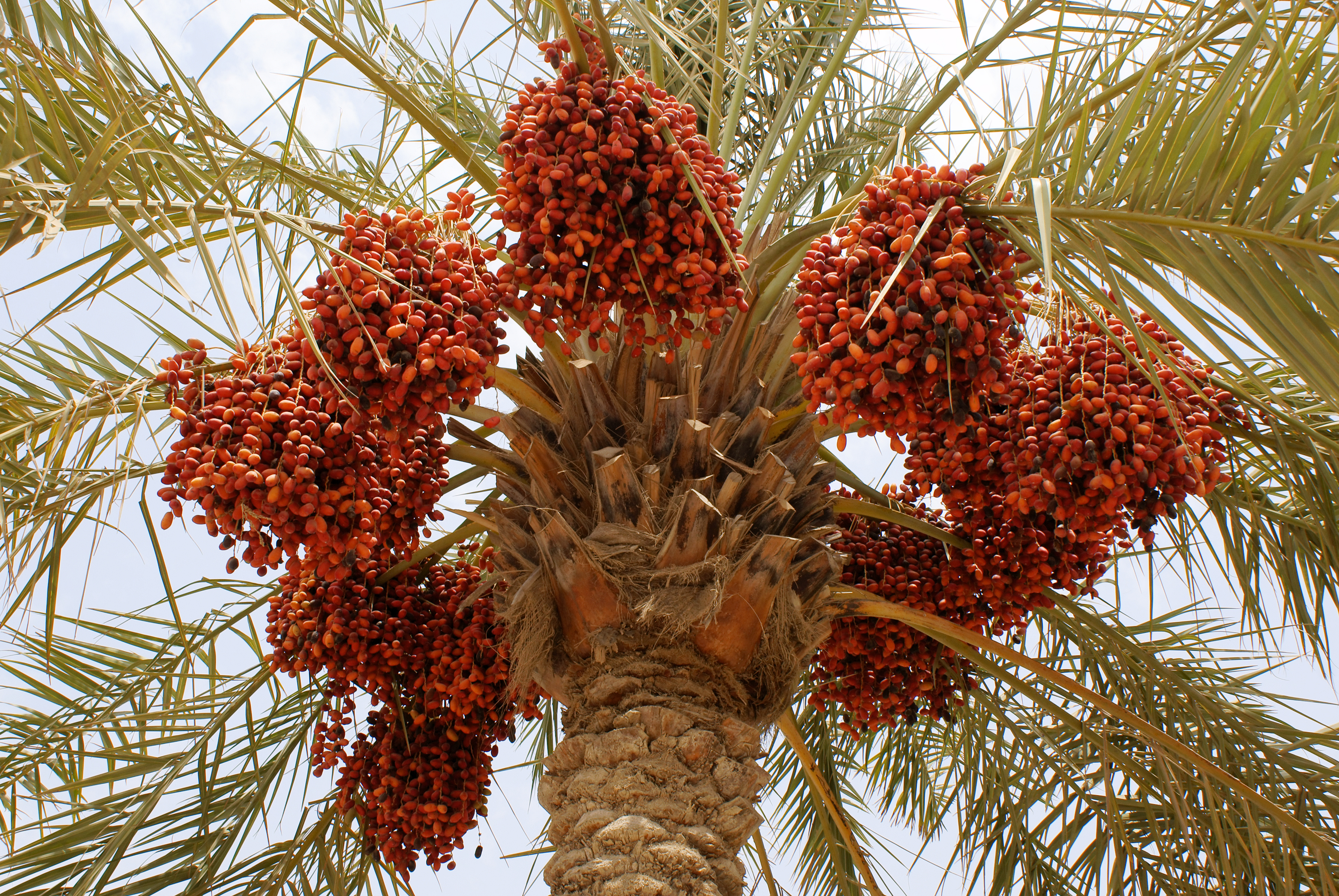The Date Palm: A Symbol of Resilience and Nourishment
The date palm (Phoenix dactylifera) is a majestic and versatile tree that has been cultivated for millennia, providing sustenance and cultural significance to countless civilizations. Native to the Middle East and North Africa, this iconic plant thrives in arid and semi-arid environments, demonstrating remarkable resilience and adaptability.
The date palm’s history can be traced back to ancient Mesopotamia, where it was revered as a symbol of fertility and abundance. It played a crucial role in the economies and societies of ancient Egypt, Persia, and Arabia. The tree’s ability to produce abundant fruit in harsh conditions made it a vital source of food and nutrition for desert dwellers.

Physical Appearance: The date palm is a tall, slender tree that can reach heights of up to 80 feet (25 meters). It has a crown of feathery leaves that can grow up to 20 feet (6 meters) long. The trunk is typically straight and sturdy, often covered in scars from old leaves.
Soil Stabilization: Date palms play a vital role in stabilizing the soil in arid and semi-arid regions. Their deep roots help to prevent erosion and improve soil fertility.

Religion and Spirituality: The date palm holds significant religious and spiritual meaning in many cultures. In Islam, it is considered a sacred tree, and its fruits are often used in religious ceremonies.
The date palm is a remarkable plant that has played a vital role in the history and culture of many civilizations. Its resilience, adaptability, and nutritional value have made it a valuable asset for people living in arid and semi-arid regions. As we continue to face the challenges of climate change and resource scarcity, the date palm may offer valuable lessons and solutions for sustainable agriculture and food security.
1. What is the lifespan of a date palm tree?
2. Where are date palms primarily grown?
3. What are the main uses of dates?
4. Are date palms susceptible to diseases or pests?
5. How can date palm cultivation be made more sustainable?



:strip_icc()/Norway-Spruce-Evergreen-Tree-48c81b7ef15d46bb8dc0989ab0fa5cc8.jpg?w=200&resize=200,112&ssl=1)



:max_bytes(150000):strip_icc()/english-boxwood-shrubs-2132072-hero-03-c9f674badbbb45128597f71cb35a71d7.jpg?w=200&resize=200,112&ssl=1)
